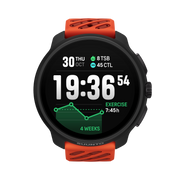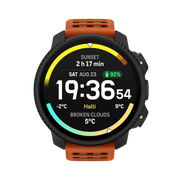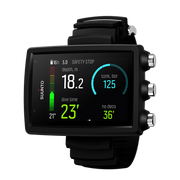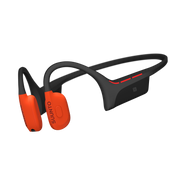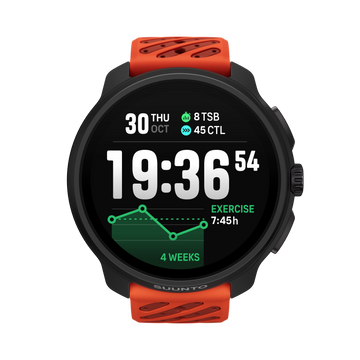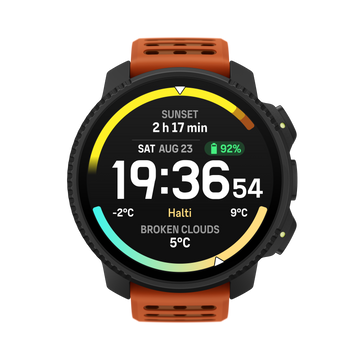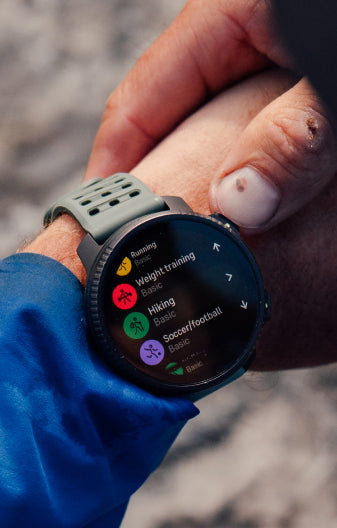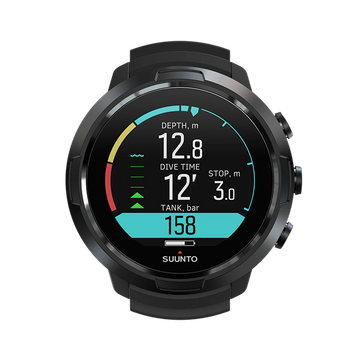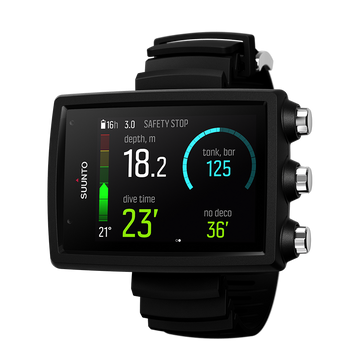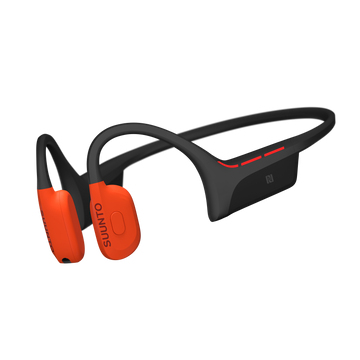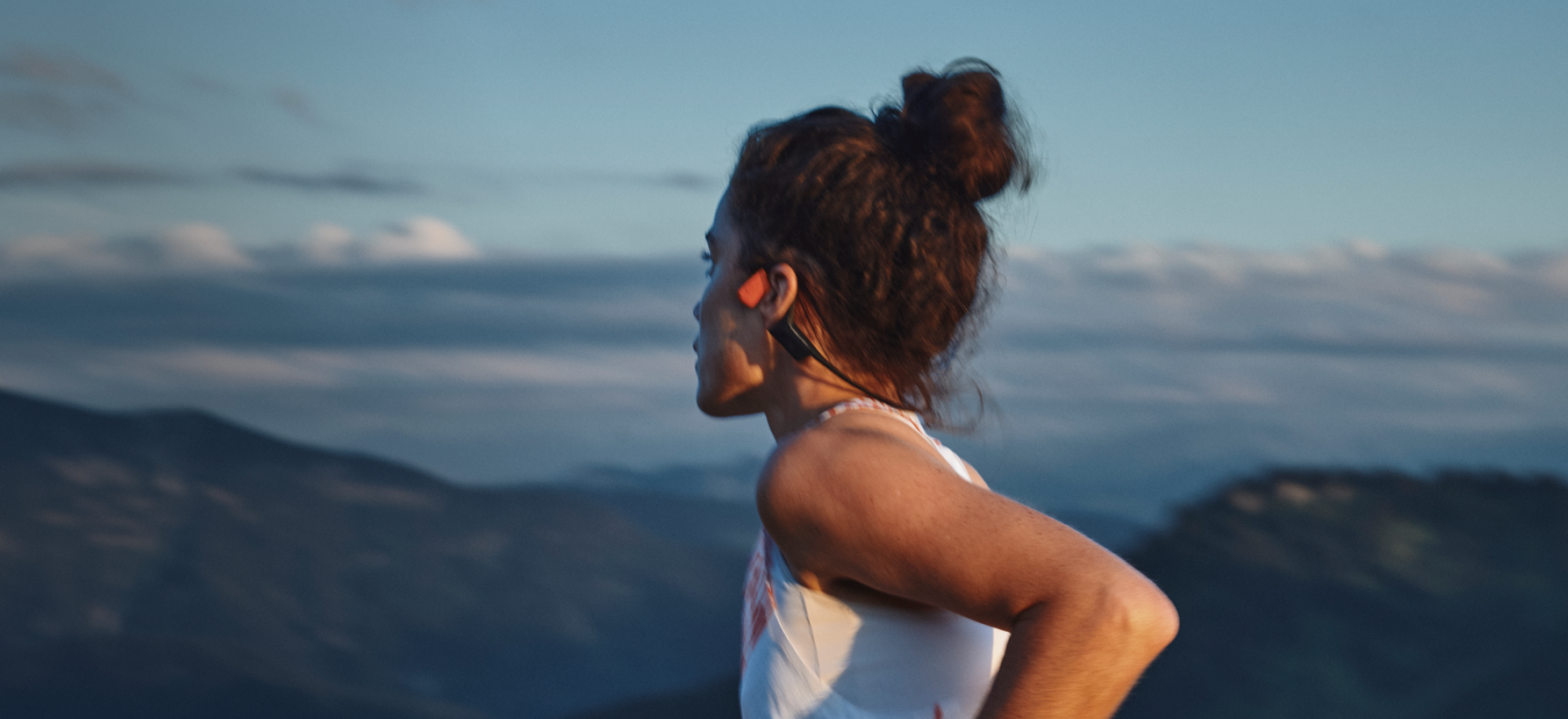

Suunto Blog
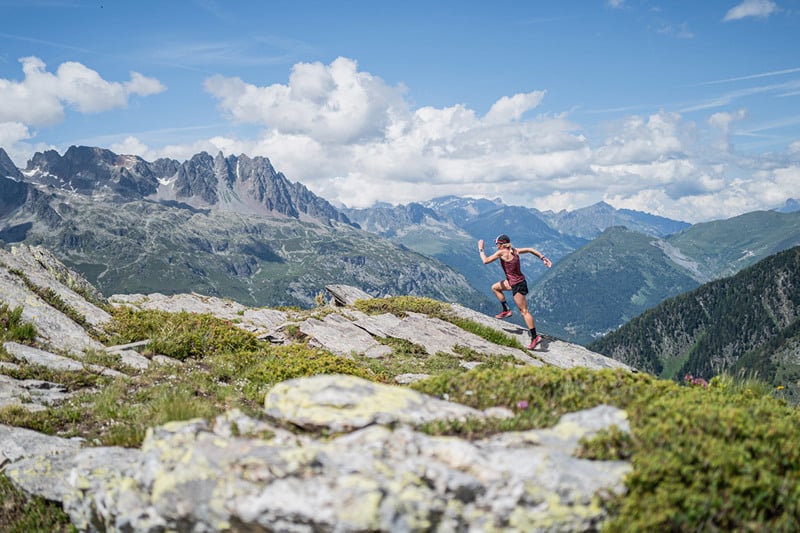
Test your fitness with Suunto
These five SuuntoPlus sports apps will help you find the right intensity zones for your training and track your progress.
The key variables in endurance training are duration, frequency and intensity. Duration and frequency – how much and how often you train – are easy to understand and track, but intensity needs a bit more knowledge. You need to know more about your fitness, training zones and training load.
The most typical way to look at this is to define your training zones based on your anaerobic threshold – the level of exercise intensity at which lactic acid builds up in the body faster than it can be cleared away. When you know your training zones, you can then adjust the intensity of your workouts from long endurance sessions to short, intense efforts. Correct zones are also key for reliably understanding your long-term training load. (Learn more about intensity zones here.)
In addition to defining your intensity zones, some of the SuuntoPlus sports apps are great for following your progress. Read on to learn more about five new favorites!
Threshold test for runners
SuuntoPlus Threshold test helps you estimate your anaerobic threshold pace and heart rate. Based on the results you can then adjust your training zones in your Suunto. Repeating the test a few times during the season will help you evaluate your progress.
This test is quite demanding as it will require a 30-minute, all out effort. For best results, run on a smooth surface and flat terrain. A running track would be ideal.
Once you select the Threshold test sports app in your watch, the test will start with a 10 minute warmup. At the end of the warm-up, notifications will inform you to get prepared to start the test.
The test itself will last for 30 minutes. The goal is to run as fast as possible at a steady pace. The last 20 minutes of the test will be used to evaluate your anaerobic threshold pace and heart rate. You can then use these to set your zone 4/5 limit in your Suunto watch. The results are also saved in the workout in Suunto app.
FTP test for cyclists
Functional threshold power (FTP) test is designed to give riders an understanding of the highest average power they can maintain for one hour.
By repeating the test regularly, the rider can follow the progress of their performance. The power for an hour is close to the anaerobic threshold and can be used to define the training zones for cycling. Set the upper limit of your power zone 4 at the level which was given as the result of the FTP test. The test protocol lasts for 20 minutes with the possibility to add additional warmups.
Once you have selected the FTP test sports app in your watch, the test will start with the workout start. The first 15 minutes is a warmup. At the end of this, notifications will inform you to get prepared to start the test.
The test will last for 20 minutes. During this period ride as hard as you can with constant power. You can see the time left and the power values on your watch.
After 20 minutes you will get an estimation of your functional threshold power. Set this as your zone 4/5 limit in cycling power zones in your Suunto watch’s intensity zone settings.
Cooper test
The classic Cooper test was created by Kenneth Cooper in 1968. The goal of the test is to run as far as you possibly can in 12 minutes. This test is useful in testing your VO2max pace and finding out if you are making progress in your training.
Once you have selected the Cooper test sports app in your watch, the test will start with the workout start. The workout starts with a 10-minute warm-up. At the end of the warm-up, notifications will inform you to get prepared to start the test.
During the 12-minute Cooper test, you will see your current pace, distance and the remaining test duration. After the test you will see your Cooper test distance and an estimation of your VO2Max. The app will also estimate your 10 km and half marathon race results.
The results are saved as part of the activity, so you will see them also in Suunto app.
Test for aerobic efficiency
This functionality really isn’t a test in the same sense as the three tests mentioned above, but still provides valuable feedback on your aerobic fitness – and the changes in it. The Decouple SuuntoPlus sports app looks at your heart rate during a long ride or run and compares that with your pace and power.
The intensity of easy, long runs and rides is often measured with heart rate together with pace (in running) and power (in cycling and running). However, as the workout gets longer, the heart rate can start to drift upwards even though the pace (or power) remains the same. The heart rate and pace (or power) are not coupled together anymore. This is called decoupling. Extensive decoupling is a sign of poor aerobic fitness.
As your aerobic fitness gets better, your heart rate will stay coupled with your pace (or power) during long, steady workouts. In workout analysis this decoupling effect is looked at by comparing the first half to the second half of the workout.
SuuntoPlus Decouple sports app does this evaluation in realtime: After a 10-minute warmup and a 10-minute baseline evaluation you will start to see your live decoupling value on the screen. This value compares your current heart rate to pace/power ratio with the original baseline ratio.
The SuuntoPlus Decouple sports app shows the change as a percentage from the baseline and indicates if you start to witness bigger decoupling effect. If the decoupling is less than 5 % you have good aerobic fitness.
Note: Decoupling effect can also happen in hot environments as your heart needs to bump blood faster to increase cooling.
20-meter bleep test
The 20-meter bleep test – or Beep test, Shuttle run test or Multi-stage fitness test – is a very well-known and popular fitness test especially in team sports. With the Bleep test sport app on your Suunto you can run the tests protocol and see what is your current fitness. The test is fairly simple: mark two lines 20 meters apart and run back and forth between these two. A beep indicates the pace for the intervals. As the test progresses, the time between beeps gets shorter; and you will need to run faster.
The Bleep test starts with a 5 min warmup. During the test, you’ll walk/run/sprint the 20 meters from one line to the other. The watch will give you an alarm every time you need to sprint to the other line. The pace ramps up level by level: The first level is 9 seconds between turns for 7 turns, then 8 seconds between 8 turns, then 7,5 seconds between 8 turns – and so on.
When you are no longer able to reach the 20-meter turn, press the lap button. This will stop the test and you will get your result. The result is shown as a level achieved and an estimate of your Vo2max.
SuuntoPlus sports apps are new, sport-specific features that you can use on your Suunto watch. You can browse through all of the sports apps in SuuntoPlus Store in Suunto app. Once you find what you want to use in your watch, select “Add to watch”. And then, when you want to use that specific feature during exercise, select it in the watch before starting an activity. Learn how to get started with SuuntoPlus sports apps here.
Lead image: Philipp ReiterRunner: Martina Valmassoi

10 SuuntoPlus sport apps for runners
Suunto’s sport apps are easy to use watch functionalities that enhance your experience with your Suunto watch with use case specific benefits. Sport apps are easy to use, too: Simply browse the selection in Suunto app’s SuuntoPlus Store, select which ones you want to use on your watch and activate them before starting an exercise.
Here are 10 popular sport apps for runners. Take a look – and take them for a run!
From left to right: Anaerobic threshold test, Cooper test, Ghost runner, Half marathon time estimator and Last km (or mile) SuuntoPlus sport apps.
Measure your anaerobic threshold
The threshold test sport app is used to estimate your anaerobic threshold pace and heart rate. This can then be used to set your training zones. In addition to finding the right intensity zones, this test helps you evaluate your progress.
This test is quite demanding as it will require a 30-minute full effort run.
Challenge yourself with the classic Cooper test
Cooper test, a 12-minute all-out effort is a classic! The distance you cover during the test correlates with your maximum effort in the middle distances and can therefore be used to estimate your VO2Max value. The test will also give an estimation of your 10 km and half marathon race results.
Pace your race
Get a live estimate of your finishing time based on your pace so far. There are separate sport apps for marathon, half marathon, and most common ultra-distances.
However, race time estimator is not only useful in pacing races: When preparing for a race, especially during harder tempo runs, it is motivating to see how this pace equals the potential race time. For example, if your pace is 05'08/km during a high paced training run, it would equal 1:48'00 duration over a half marathon distance.
Pace your run
When trail running in a technical terrain the current pace can be changing so rapidly that it often is not very meaningful. The Last kilometer sport app gives you a live, rolling kilometer pace to follow.
Chase a ghost runner
Catch the virtual ghost runner to practice your pacing or just for fun.
From left to right: Manual intervals, Manual intervals for hill repeats, Cadence Coach, Loop and Hydration alert SuuntoPlus sport apps.
Intervals made easy
Manual intervals sport app helps you control your interval sets without pre-planning: During recovery it will show you the results of each rep and during the effort it will show you values such as the number of intervals you have done, the interval duration, distance, and pace & heartrate. After your workout you can see each interval in Suunto app’s lap table.
Data for your hill repeats
A separate Manual intervals sport app is available for hill repeats. It works like the regular Manual intervals sport app (see above), but this one highlights data that is relevant especially when running uphill. This does not require pre-planning, so you are in control during the hill repeat session!
Work on your running technique
The Cadence coach will show you live cadence and stride length. This tool helps you monitor your cadence and follow the changes while you work on your running technique or change your running style.
Get location-based laps automatically
Automatic location-based lap insights help you analyze the stats for each loop. This is an excellent feature for repeatedly running the same loop. Loops can be viewed afterwards in Suunto app.
Stay hydrated
The drink reminder sport app helps you stay hydrated during long workouts and races. You will get a drink reminder every 10, 15 or 20 minutes depending on the sport app you have selected. You will also be able to follow the total volume consumed. Remember, hydration needs are individual and depend on the exercise intensity and current conditions.
Images: Philipp Reiter Athlete: Ida-Sophie Hegemann
Watch and learn more about SuuntoPlus Store
READ MORE
Learn how to get started with SuuntoPlus sports apps
How to run a sub 3h marathon
The lazy runner's guide to a marathon

World Vertical Week 2023 photo competition winners
As always, Vertical Week inspired the Suunto community and resulted in some incredible performances — and photography!
We scoured through all the shots on Instagram tagged with #verticalweek and found it hard to choose our three winners for this year’s photo competition. Thanks to everyone who participated.
Here are the winners!
Following his Suunto 9 Baro in the Tatras
Motion designer, photographer and passionate Polish hiker Lukasz Pabian shared this shot he captured while hiking to Czerwone Wierchy, the Red Peaks, in Poland’s Tatra mountains. He’d been sitting at his desk most of Vertical Week, waiting for his chance to get out into the mountains. When it finally came, it started out a beautiful day: clear, sunny and windless. But weather in the mountains is notoriously fickle.
“When a strong wind arrived, everything started to pick up speed, I had to speed up,” Lukasz says. “The clouds covered the other peaks more and more and the sun was already setting behind the peaks - it was getting dark, the visibility in the clouds was less than five meters. Everything around me was white, the ground was white from snow, the air was white from fog. Never before had I needed my Suunto 9 Baro as much as I needed it then. I had the route saved in my watch that I was supposed to follow. The visibility dropped to a few meters and I was still up on the ridge by the time evening came. There is rarely internet access in the mountains so I couldn’t use a map app, but thanks to my Suunto I was able to get back to the valley and eventually home safely. It was an amazing experience, a great hike, and I took some cool photos, stepped out of my comfort zone and had an unexpectedly challenging time.”
This is what World Vertical Week is all about!
Ski touring above Davos
Swiss mountaineer, beginner paraglider and Alps explorer Florian Cotting shared a shot he got on a five-day ski-touring trip from Bergün to Davos. The lack of snow in the Alps this winter forced him, his girlfriend and a few friends to embark on a spontaneous, mostly unplanned trip.
“We were alone up there with an average of 1500 m of ascent a day,” Flo says. “The photo I chose was the second to last day of our journey and it was just after we put the skins back on for the second time that I took it! We went back down on the other side of the pass and my girlfriend asked: ‘let’s go back up for a third time?’” .
That’s the spirit!
Lighting an ice curtain above Salzburg
Austrian mountain lover, trail runner and ski tourer Anna Wacha lives near Salzburg, Austria and is blessed with endless mountains to explore with her husband, family and Chilli, her friendly dog.
“The picture was taken on a skitour with my husband, my mom and a good friend,” Anna says. “The mountain we were going to is called Hocheiser (3206 m). The tour starts at Enzingerboden and, after a short walk, you have to pass a tunnel and at the end of this tunnel is a big curtain of ice. In my shot you can see our headlamps lightning up the ice.”
Lead image: © Philipp Reiter

Suunto World Vertical Week 2023 Big Data
Suunto’s annual World Vertical Week has been growing in popularity year after year. Last week, on February 27 – March 5, over 153.000 Suunto users accepted the challenge and set out to gain as many vertical meters as they could. That’s 22% up from last year! Thank you everyone for joining.
During the Vertical Week, every human-powered outdoor activity counted towards the results. In the activity type rankings, there weren’t any major changes: ski touring activities had once again the biggest average ascent, followed by mountaineering and trail running.
Also, the country rankings follow quite a usual pattern: the two top spots for highest average ascents are owned by Austria and Italy – just like last year. In the third position, we have a new nation, Slovakia. Congrats! Portugal and Colombia are new names in the top 10.
Total ascent per country 2023
When looking at the total ascent per country, we can see a new leader: France dethroned Spain and took the top spot. Austria, Italy and Germany round out the top five.
France
Spain
Austria
Italy
Germany
Switzerland
US
Poland
Finland
Japan
Big – and huge – days are more popular than ever
When digging deeper into the data we start to see something interesting: big days out in the mountains and hills are getting more popular. The number of “1000-meter days” has grown by a whopping 75% from last year. During last week’s activation, Suunto community tracked over 12.000 activities that had over 1.000 meters of total ascent.
The same trend continues with activities that had over 2.000 meters of ascent: that number increased by 76% to over 2.000 activities. The number of really, really big days – days that had more than 3.500 meters of ascent – doubled from last year!
This same trend is visible also when looking at the data from another perspective: 176 participants collected more than 10.000 meters of total ascent during the week. That is twice as much as last year. Impressive!
As the days get bigger, the activity types change slightly: The biggest portion, 40%, of 1000-meter days was ski touring while trail running covered 25% of the activities. In the 2000-meter days ski touring and trail running was almost equal at 32% and 30% respectively. A surprise comes with the 3500-meter – or “10000-foot” – days: there suddenly running has the biggest share with 28% of the activities followed by ski touring (22%) and trail running (21%). Some runners have really pushed it last week!
Country rankings for different activities
Ski touring (avg for all countries 929m)
Switzerland 1.033m
Austria 1.005m
Italy 994m
Spain 940m
Germany 936m
The 1000-meter mark is a clear goal for skiers. Switzerland is in the top spot – just like last year.
Mountaineering (avg for all countries 676m)
Czech Republic 788m
Switzerland 760m
Germany 755m
Japan 717m
Poland 699m
Mountaineering has a new winner: The Czech Republic climbed to the top spot for the first time!
Trail running (avg for all countries 421m)
Japan 852m
Portugal 707m
Italy 620m
South Korea 536m
Spain 528m
Switzerland 508m
Austria 443m
Slovakia 413m
Slovenia 391m
Thailand 382m
Japanese trail runners crushed it again! Also, other Asian nations, like South Korea and Thailand proved that uphill is the way to run in that corner of the world.
Mountain biking (avg for all countries 387m)
Italy 516m
Spain 515m
Portugal 453m
Switzerland 446m
United Kingdom 386 m
In mountain biking, Italy rose from the second spot last year to number one this time. Forza!
Hiking (avg for all countries 221m)
Italy 441m
Slovakia 426m
South Korea 373m
Thailand 349m
Japan 337m
Another crown for Italy – and another activity ranking where Asian countries are strong.
Cycling (avg for all countries 182m)
Spain 417m
Portugal 394m
Italy 369m
Slovenia 306m
South Africa 248m
Spain, the top destination for winter cycling in Europe, was not a surprise leader in the cycling ranking. A welcome addition to the list was South Africa, nicely adding yet another continent to the top lists. Along with several European countries we had nations from Asia, Africa, South and North America amongst the top performers. Awesome!
Nordic skiing (avg for all countries 180m)
Japan 418m
Slovakia 411m
Spain 377m
Czech Republic 357m
Poland 335m
This list looks quite different from last year! Japan takes its second top spot in a slightly surprising category to complement its win in the trail running category. The usual suspects for Nordic skiing, Norway (277m), Sweden (209m) and Finland (125m), did not reach the top of the rankings this time.
Running (avg for all countries 100m)
Switzerland 157m
Slovenia 137m
Portugal 131m
Czech Republic 127m
Norway 125m
Running, the most popular activity overall, is not the king of Vertical Week: its average ascent is the smallest, exactly 100 meters. However, in the leading nation, Switzerland, the average ascent for running was over 50% more than that.
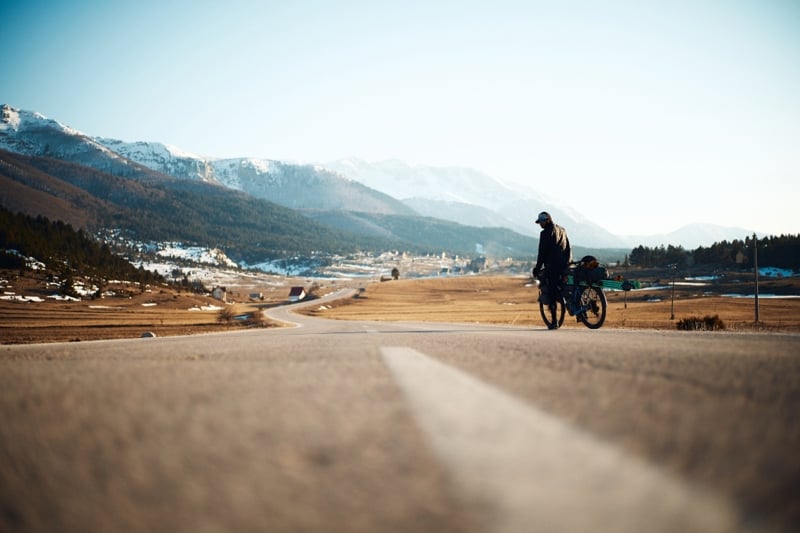
Watch the Balkan Express adventure film
All we need sometimes is one special moment to make hardship worthwhile. When long-time adventure buddies Max Kroneck and Jochen Mesle gazed out across Valbona valley in Albania, blanketed in virgin POW, and with it all to themselves, it made the trials of their Balkan Express adventure project worthwhile.
Cycling in temperatures that dropped to -15c, flats, a minor crash, intimidating street dogs, exhaustion, and the kindness of strangers - they experienced all this and more while cycling from the coastal city Thessaloniki in northern Greece through the Balkan region to Munich, Germany during late winter 2022. All up, they cycled 2500 km and skied seven spots in seven countries
Their minds were blown by the mountains and slopes they discovered along the way. Their minds were even more blown by the fact they had them all to themselves. It turns out, freeriding hasn’t really caught on throughout the Balkan nations. Neither have bike lanes. They met some inspiring locals who enriched their journey. And that was the point; it was an adventure as much about connecting with the local cultures as it was about cycling and freeriding.
We caught up with Max and Jochen and asked about their experience. Read on below and click here to find out where you can watch the adventure documentary that’s been picked up by the BANFF Mountain Film and Book Festival.
Watch the full film below!
How and why did you come up with the idea for the project?
Max: We really wanted to experience some mountains, cultures, people we didn't know. We looked at a map of Europe and saw that the Balkans are pretty interesting. We’d never been there and wanted to learn about the people living in the mountains there. The sport side wasn’t the main focus of the project. It was about getting to know the culture and people.
How did you connect to local people?
Jochen: Before we left, we tried to get in contact with local mountain guides and local artists. We connected with four people and met them along the way. And of course we met a lot of people on the road. Those people gave us a good insight into life there.
What was your route?
Max: We started in Thessaloniki. We went skiing at Mount Olympus in Greece, then we cycled through Macedonia, Albania, Kosovo, Montenegro, Bosnia and Herzgovina, Croatia, Slovenia, Austria and back to Germany.
How did your Suunto watches help you?
Jochen: In combination with Komoot it was so good to be able to plan and also be spontaneous along the way. We didn’t need to think about navigation. We spent some time in the morning planning and then just followed our watches. We didn’t get lost once! It was cold in the beginning and it was interesting to see the temperature on our watches. I’m a statistics nerd so I I enjoyed getting all the numbers. We also used the heatmaps in Suunto app sometimes, especially in Albania and Greece where there are more mountaineers, and it seems like they use Suunto too! So we could use the heatmap to hike up.
What was something that surprised you as you traveled through?
Max: We met a mountain guide in Kosovo, Uta, who is trying to make mountaineering more popular in Kosovo especially amongst women, since there are so few. She also talked about their home mountains; they are so beautiful, yet very few of the locals use them. They’re mostly empty. It’s crazy this region is so close to ours, but almost nobody there is into mountaineering. We were pretty much always alone. We met some Italian ski mountaineers in Kosovo once. Then we saw them again later in Albania. But that’s it. Most western Europeans don’t know about all the incredible spots.
Also surprising was learning that it was not so long ago that the first freeriding equipment became available there. A mountain guide from Kosovo told us he could only buy freeriding skis and touring bindings there 10 years ago. The market is just not there. These sports haven’t taken root in the culture. Maybe amongst the richer people.
We also didn’t see any cyclists along the way or cycling tracks. Cars play a big role in the Balkan countries.
Did you find many beautiful ski runs you'd like to go back and ride again?
Max: For sure. We had seven days of skiing in seven different countries, starting with Greece. It was a bummer that we had to keep moving forward and weren’t able to spend more time in each place, especially in the countries further south. We saw beautiful mountains in Montenegro, but we couldn’t go skiing there. We really want to go back. But at the same time, it was also nice to keep moving forward. We had really good snow conditions in the southern countries, but the further north we went, when we expected better conditions, it actually got worse.
You guys are backcountry skiers and mountaineers - do you have a background in cycling, too?
Jochen: Max and I met at local ski parks. We both made our way to the backcountry and went to freeriding comps together. A few years later I invited Max to a film project — that’s how we got to know one another better.
Back in 2018 we did a similar project and made a film about it: Ice and Palms. We started from our doorstep in Germany and cycled to the Mediterranean and skied the mountains we know and love along the way. That’s when we started to enjoy riding bikes.
Where can people see Balkan Express?
Jochen: There’re lots of screenings coming up, and we’ll be doing live talks, presenting our book about the project. Then, in the middle of winter, people will be able to watch the film online. It’s so cool to see such a wide range of people are getting inspired by it.
Images by @maxkroneck / @jochen_mesle / @elflamingofilms

Join Suunto World Vertical Week 2023 and reach new heights!
Together, we can inspire and motivate each other to climb higher and reach new heights. So let's lace up our boots, grab our Suunto watch, and get ready to conquer the vertical world! Run, ride, ski, walk, climb – all human-powered activities between February 27 and March 5 count.
#verticalweek is also an opportunity for nations to go head to head to see who climbs the most. Since 2016 nations have battled for the top spot, as well as sports, to see who can accumulate the most vertical meters.
To participate in Suunto World Vertical Week, open Suunto app and click the Vertical Week card in your inbox (the bell symbol on the top of your screen takes you there).
Share your #verticalweek experience and win!
Run, hike, walk, ski or ride a quad-busting route and then share the workout from Suunto app as an image with the data overlay in Instagram, tagging @suunto and #verticalweek, and we’ll select three of the most inspiring shares and those users will win a Suunto 9 Peak Pro GPS watch.
Click here to learn how to share your activities with Suunto app.
Terms and conditions apply. Check them here.
Data from the previous years
Check out which sports and nations have captured the podium places during the past years. Will this year bring changes to the top places? Now is your chance to affect on this year's results by collecting as many vertical meters as possible.
2022 - Summer 2021 - Winter 2021 - 2020 - 2019 - 2018 - 2017 - 2016
